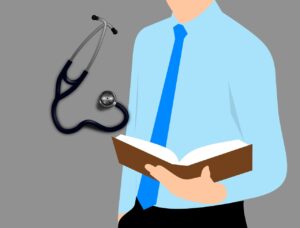During the second World War the name for PSTD was called ‘shellshock.’ Later on after the Korean War, it was known as ‘gross stress reaction.’ It is now a recognized medical condition that can be caused by single ‘big T traumas’ or a combination of ‘little t traumas’.
Causes of PTSD
PTSD occurs as a result of an experience that is horrifying or terrifying. It can be caused by a big T trauma such as natural disaster (fires, earthquakes, hurricanes, tornadoes, tsunamis etc) or it could be anything else as it affects people subjectively; very old incidents that occurred during childhood included. Not all will have the same reaction from the same event; some may recover within a reasonable time and others will have potentially lifelong PSTD.
High risk traumas that are likely to cause PSTD are:
- Rape or sexual abuse in adulthood
- Sexual or physical abuse in childhood
- Domestic violence
- Armed robbery or torture
- Violent acts leading to death
PTSD sufferers generally experience: hopelessness, emotional weakness, depression & confusion but may also experience the effects of disassociation.

PSTD and disassociation
Disassociation is a process of mental escape during a trauma as a coping mechanism if the trauma is too much to bear. After the trauma and for some the person disassociating has detached from some parts of the reality of the past trauma. Their memory may be affected and they may appear dazed and confused or appear to lose track of time and even lose track of recognizing places. Sometimes people around may not seem real. Time can speed up or even slow down for them. They may feel as if they are viewing a movie of their own life, in other words feel detached or disembodied. They may feel parts of their body are disconnected which leads to anxiety. They may appear numb and emotionless. A lot of memories may have been blocked out and completely forgotten. They find it hard to trust anyone and will not allow anyone to get too emotionally close. They cannot cope with connecting with other people who have had traumatic reactions or experienced trauma because of what it reminds them of that they have disassociated from.

Complex PTSD – CPTSD
PTSD (and Acute Stress Disorder) sufferers share three core symptoms:
- Being on red alert (hypervigilance)
- Intrusive thoughts relating to the trauma
- Avoidance
Simple PSTD is usually as a result of one single traumatic event and responds well to CBT. Complex PSTD however occurs when people have suffered from repetitive traumas and cannot usually be treated just with standard CBT or if it can help it would take a very long time. Symptoms are more varied and multiple with PSTD. Common causes of complex PTSD are:
- War-related traumas
- Chronic relationship abuse
- Urban violence
- Childhood sexual or physical abuse
- Childhood neglect
Symptoms of complex PSTD include more extreme symptoms eg unpredictable risky behaviour and sever mood swings. Other symptoms may include disassociation, deep negative feelings of self- hatred or helplessness leading to self harming, distorted feelings eg Stockholm Syndrome, altered feelings leading to over jealousness or distrust, loss of meaning and depths of despair and physical symptoms of panic attacks, increased heartbeat, hyperventilation, trembling, sweating and feeling light headed. There is often an overlap with borderline personality disorder with similar symptoms.

Triggers of PSTD
The trigger is something that occurs and perceived that is associated with a previous traumatic event. It then triggers emotional and physical responses that repeat the responses from the original trauma again. The linking of present triggers to past traumas is known by counsellors as traumatic coupling because the link is so strong that the trigger creates the same response. Apart from obvious triggers there are more subtle ones such as:
- Sensory triggers – including sounds, sights, tastes, odours and sensations which cause memory recall of many varied memories;
- Painful physical experiences – eg; sight of blood could trigger off bad
- Memories of injury or violence. Certain dates could trigger off the memory of the anniversary of the trauma or, relate to an individual who may have died in the event.
- Emotions connected to the trauma – when terror has been experienced or any other type of fear can trigger a flashback
- Legal proceedings – where legal proceedings are involved after the trauma, this can repeatedly create triggers.
- Intimacy – contact with another person in an intimate way can trigger off a PTSD response especially if the original trauma was sexual or physical abuse.
- Milestones – a milestone can create many emotions and act as a trigger leading toward difficult memories re-surging.
Children and PSTD
Children can also experience PSTD especially after a series of abuse incidents. The behaviours that a child survivor of abuse with PSTD might display include:
- Intense separation anxiety
- Increased startle response
- Sudden sleep problems

Diagnosis of PSTD
According to the Diagnostic and Statistical Manual of Mental Disorders, Fifth Edition (DSM5) the diagnosis for Stress Disorders has three categories:
Acute Stress Disorder– symptoms last from three days to a month after the traumatic event
Post Traumatic Stress Disorder (PSTD)-symptoms from the trauma remain after one month since the traumatic event. Symptoms include re-experiencing, avoidance, alternations in cognition, mood change and alteration in arousal and reactivity. PSTD can often have a disassociation aspect as well.
Chronic PSTD- symptoms persist after 3 months or longer.
If three specific symptoms of – 1) Intrusive thoughts 2)Hyperarousal 3)Avoidance- are being experienced for more than 3 months after the traumatic event – it would likely lead to a diagnosis of PSTD. However, there is also the concept of delayed expression/onset of PSTD which can start or continue to be present 6 months after the event. If a client experienced a trauma some months previously and have only just started to experience symptoms, they may have delayed onset PTSD. If the symptoms started within the four-week period after the trauma, they may have Acute Stress Disorder.

Depression and PSTD
Depressive symptoms of complex PTSD are often the hardest to resolve. Feelings of hopelessness, helplessness, despair, and shame can dominate the person’s reality. When your mental and physical well-being becomes compromised, it is hard to see a way out. A person can have PSTD and Depression at the same time, however people with PSTD generally have greater anxiety around specific people, places or circumstances, likely due to past traumatic events. (1)
| SYMPTOMS OF DEPRESSION | COMMON PTSD SYMPTOMS |
| Dwelling on past memories that elicit sadness, regret and shame | Re-experiencing memories. This may include flashbacks or intrusive memories about the event, nightmares, and unwanted memories.
|
| Having no pleasure from activities that were once enjoyable | Avoidance. You may try to keep from talking or thinking about the event. To do this, you may avoid people, places, or events that remind you of the stressor.
|
| Feeling sad or hopeless
Having difficulty focusing and making decisions
Experiencing feelings of worthlessness
Contemplating suicide or thinking about death frequently |
Mood swings and negative thoughts. Moods change regularly, but if you have PTSD, you may feel down, numb, and hopeless frequently. You may also be hard on yourself, with a great deal of guilt or self-loathing. You might also feel detached from other people, including friends and family. This can make PTSD symptoms worse.
|
| Feeling tired or not having enough energy
Sleeping too much |
Changes in behaviors and reactions. PTSD can cause unusual emotional outbursts, like being easily startled or frightened, angry, or irrational. It may also cause people to act in ways that are self-destructive. This includes speeding, using drugs, or drinking too much alcohol.
|

Approximately half of people with post-traumatic stress disorder (PTSD) also suffer from Major Depressive Disorder (MDD). The current paper examines evidence for two explanations of this comorbidity. First, that the comorbidity reflects overlapping symptoms in the two disorders. Second, that the co-occurrence of PTSD and MDD is not an artifact, but represents a trauma-related phenotype, possibly a subtype of PTSD. Support for the latter explanation is inferred from literature that examines risk and biological correlates of PTSD and MDD, including molecular processes. Treatment implications of the comorbidity are considered. (2)
There are two competing explanations for this comorbidity. The first is that the comorbidity reflects imprecision in symptom classification into the two discrete categorical diagnoses. Support for this explanation would come from variability in comorbidity rates based on different versions of the Diagnostic and Statistical Manual of Mental Disorders (DSM), as there have been changes to the number of symptoms required for diagnosis of PTSD, but not MDD. An alternative view is that the co-occurrence of PTSD and MDD represents a trauma-related phenotype that is distinct from MDD and reflects a fundamental dimension of risk for psychopathology following trauma exposure. Support for this explanation is less straightforward, but can be inferred from the research literature examining risk factors and biological correlates for the individual disorders, and where possible, for the comorbidity.(3)
PSTD plus Depression can lead to serious health effects
Boston, MA – Women with post-traumatic stress disorder (PTSD) and depression have an almost fourfold greater risk of early death from cardiovascular disease, respiratory disease, type 2 diabetes, accidents, suicide, and other causes than women without trauma exposure or depression, according to a large long-term study conducted by researchers at Harvard T.H. Chan School of Public Health. (4)
PSTD and inner voids that are not filled
“It is one thing to process memories of trauma, but it is an
entirely different matter to confront the inner void.”
—DR. BESSEL VAN DER KOLK, psychiatrist

HOW TRTP CAN HELP
The Richards Trauma Process (TRTP) differs from traditional therapy in several key ways. While traditional therapy often focuses on talking about feelings and experiences, TRTP focuses on the physical sensations and emotions that are stored in the body as a result of traumatic events, and unlocking those in a safe way. Instead of just discussing experiences. TRTP works with the unconscious mind to give it a bit of a “reset” in the areas that are causing problematic emotions and behaviour. There is no need for deep hypnosis either.
The therapist uses techniques that help access the subconscious mind and allow trauma to be released and let go of, so that it no longer plays like a broken record in the individual’s life.
3 Stage Process -Finished in just 1 Month
TRTP™ Therapy resolves trauma related issues – quickly, safely and effectively, with a 3 step process. These trauma-related issues include PTSD, anxiety and depression. It helps individuals overcome chronic emotional dysregulation without retraumatizing to the extent of reliving the past. The therapy is heavily guided by the therapist and not like traditional “talk therapy” where the client keeps repeating all the details of past distressing events. TRTP therapy is a holistic and gentle approach that provides a supportive environment for individuals to heal, grow, and thrive. As it can be fully completed in one month it is ideal for people with acute or situational stress, anxiety or depression to get a solution right away.
The Ideal Online Therapy
There is no need to have TRTP sessions in person; in fact sessions via video conferencing are highly effective because they minimise distractions, have a better audio receptive for the TRTP technique, and help the client to be at ease in their own home.
Book a free Discovery Call
If you would like a complimentary no obligation free introduction telephone call to see if TRTP is right for you and have the chance to ask any questions, you can book here: I want to book a free introduction call
References:
(1) Healthline.com
(2) National Library of Medicine
(3) National Library of Medicine
(4) Harvard T.H. Chan School of Public Health

